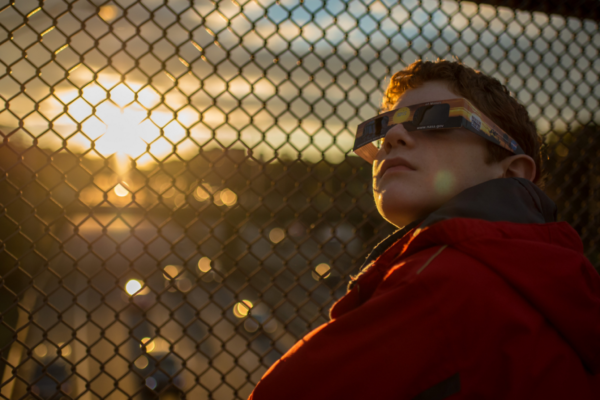On Monday, Aug. 21, skies across parts of North America will turn dark. Nicknamed “The Great American Total Eclipse,” this event has become a cultural phenomenon. Everyone is talking about what will be the first total solar eclipse in the United State in 38 years.
If you are in Texas, you won’t get to see the total eclipse in person, but you will get to view a partial eclipse.
There are some things you should know (including safety tips!) if you’re interested in joining the thousands of people who will be turning their gaze to the sky soon.
We enlisted the help of UT planetary astronomer Judit Ries to break down eclipse basics and viewing tips.
DISCLAIMER: Skywatchers should NEVER look at a partial solar eclipse without proper eye protection. Looking directly at the sun, even when it is partially covered by the moon, can cause serious eye damage or blindness. Check out NASA’s complete guide to find out how to view the eclipse safely.
1. What is an eclipse?
Judit Ries: An eclipse refers to the event when the light from one object is obscured by another. For a solar eclipse, the Moon comes between the Earth and the Sun, blocking the Sun’s light. The total eclipse we see this year will last about 2 minutes.
If you happen to be where the moon can completely block out the light of the sun, you see a total eclipse. But as you move away the viewing perspective changes, and only part of the sun is covered, so you have a partial eclipse. If you move even further away, you do not see any coverage.

2. Why is a total eclipse so rare?
Ries: Eclipses can only be seen from a narrow path on the Earth because the moon is so much smaller than the sun. The alignment has to be just right, but eclipses are only rare if you are stuck in one place.
Six total eclipses and seven annular (ring-like) eclipses are visible somewhere on the surface of the Earth between 2010 and 2020. They are visible each time in a different place, and one thing to remember is 75 percent of the Earth is covered by ocean. So the narrow ribbons where the eclipses are visible often fall on water.
You can see here the size of a total eclipse ribbon compared to the whole U.S.:

Because most people do not get to travel, having a total eclipse “come” to your place is exciting!
3. What will a total eclipse look like?
Ries: The human eye is very good at adapting to very different light levels, so until about 80 percent of the sun’s light is blocked, you will not even notice that something is happening.

But, when a total eclipse occurs, it feels like somebody is switching the light off because it changes from daylight to dark so fast. You can see the stars in the sky, you can see Mercury and Venus during the day with your naked eye, and of course you can see the faint corona and pink prominences near the edge of the Moon — something most people will never see with their own eyes. Then the light switch is on again, and everything returns back to normal.
I am an astronomer, but when I saw a total eclipse for the first time, it was a profound experience.
4. What is a corona?
Ries: When there is a total solar eclipse, the moon blocks all the light from the sun, and all we can see is the faint corona against the dark sky. The corona is the outermost layer of the sun. (In Latin it means “crown.”) It extends millions of miles from the surface of the sun, but it is much fainter than the sun itself, so it isn’t visible normally.
5. What will we see here in Texas?

Ries: We will see a partial eclipse. From UT Austin at maximum about 65 percent of the sun’s disk will be covered. This happens at 1:10 p.m. The moon will “touch” the sun at 11:41:07 a.m. and will move completely out of the way at 2:39:29 p.m.
DO NOT look at the partial eclipse unless you have special, sun-safe viewers. Your glasses should be either certified viewer or #14 or stronger welder’s glass to protect your eyes from the UV radiation. This radiation is always coming from the sun, but normally we are not tempted to look directly at it 🙂
You can also safely view the eclipse using pinhole projection. That is, make a small hole in a piece of paper and look down on the ground at the shadow of the paper. Or, you can look at shadows the trees cast to see the crescent-shaped sun.
Curious about what the eclipse might look like? Read This: A research team from Predictive Science Inc. used the Stampede2 supercomputer at UT Austin’s Texas Advanced Computing Center (TACC) to forecast what the total eclipse will look like.




